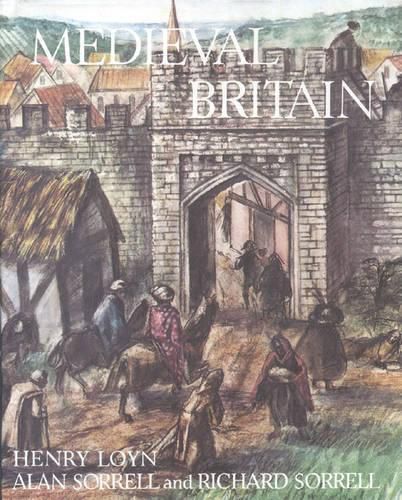Readings Newsletter
Become a Readings Member to make your shopping experience even easier.
Sign in or sign up for free!
You’re not far away from qualifying for FREE standard shipping within Australia
You’ve qualified for FREE standard shipping within Australia
The cart is loading…






On June 15, 1215, King John set his seal to the draft of a great charter - the Magna Carta - which asserted a principle of supreme importance in the history of monarchy: that the king should govern the realm according to the law. What part, then, were the people to play in the making of that law, and how was the law to be enforced if a monarch tried to set it aside? Medieval Britain saw periods of great social, political and economic change. Throughout the 13th, 14th and 15th centuries, barons and bishops, knights and merchants, townsmen, even village people, were caught up in the struggle to claim effective roles in the government of the country. From the civil and national wars of medieval Britain, the pattern of Tudor government was eventually to emerge. Henry Loyn’s text traces the story of this struggle, commenting on the social and economic changes which influenced it, the cultural developments which grew from it, and the recurrent outbreaks of war and conflict in which it was expressed. The drawings by Alan and Richard Sorrell illuminate and extend our appreciation of this fierce and complex period.
$9.00 standard shipping within Australia
FREE standard shipping within Australia for orders over $100.00
Express & International shipping calculated at checkout
On June 15, 1215, King John set his seal to the draft of a great charter - the Magna Carta - which asserted a principle of supreme importance in the history of monarchy: that the king should govern the realm according to the law. What part, then, were the people to play in the making of that law, and how was the law to be enforced if a monarch tried to set it aside? Medieval Britain saw periods of great social, political and economic change. Throughout the 13th, 14th and 15th centuries, barons and bishops, knights and merchants, townsmen, even village people, were caught up in the struggle to claim effective roles in the government of the country. From the civil and national wars of medieval Britain, the pattern of Tudor government was eventually to emerge. Henry Loyn’s text traces the story of this struggle, commenting on the social and economic changes which influenced it, the cultural developments which grew from it, and the recurrent outbreaks of war and conflict in which it was expressed. The drawings by Alan and Richard Sorrell illuminate and extend our appreciation of this fierce and complex period.